by Briscoe White | Jan 6, 2012 | Herbs, Miscellaneous, Recipes |
Missing the taste of fresh herbs from your garden already? Our third resolution for our herb garden is to savor the flavor! By that I mean, harvest and preserve your herbs to enjoy them throughout the year in your favorite recipes. Dry your herbs for soothing medicinal teas or preserve your culinary herbs in butter for a seemingly gourmet trimming for your table. The possibilities for your herbs are just as boundless as the ways to preserve them!
3. Harvest and Preserve
For the best techniques on harvesting your herbs, here are some things to remember:
- Harvest often once your herbs are established, which will encourage overall healthier growth.
- Make sure to gather herbs in the early morning after the dew has dried and the sun is less intense, for the least amount of stress to your plants.
- When harvesting, use a clean pair of scissors for a fresh cut, and for best flavor, pick foliage before the plant begins to flower. (You can prolong this harvesting period by deadheading your herbs.)
- You can harvest annuals, like Basil, right up until you see frost, but it’s best to stop pruning perennials like Rosemary about a month before the ground freezes, as trimming them late in the season may make them too tender to withstand winter.
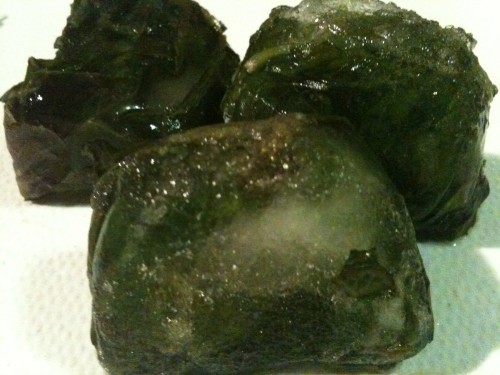
Preserve your herbs, like Basil, by freezing it into cubes!
When it comes to preserving your herbs, you can freeze them, dry them, add them to vinegar or oil, or create herb butters. When drying, make sure to wash your herbs thoroughly, and hang them in a loose bunch in a cool, dark area to dry. They need good, non-humid air circulation to dry without rotting, and keeping them in the dark helps to preserve their natural oils. Herbs like Basil are easily chopped and frozen in ice cube trays for easy storage, while herbs like Stevia can be easily rendered and the sweet extract can be preserved in the fridge for use in desserts or tea.
By preserving your garden, you can appreciate its wonderfully fresh flavors well into the winter months. A wonderfully simple but powerful way to enhance a dish, using your own herbs will also prevent you from buying overpriced, out of season plants or cuttings in the grocery store. By incorporating your garden into your everyday life, you’ll be surprised at your constant return on investment. With our resolutions for your 2012 garden, you’ll stay healthier by infusing your diet with vitamin and mineral-rich herbs, and you’ll save money by preserving your bounty for the year to come. Try creating some of your own garden resolutions for this coming year and experience the joy and satisfaction of a more sustainable lifestyle.
by Briscoe White | Jan 3, 2012 | Basics, Gardening, Growing, Herbs, Inspiration, Miscellaneous |
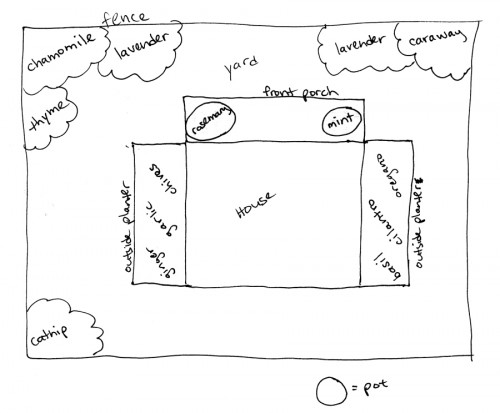
With the start of a new year, many of us are busy making resolutions that rarely last longer than the month of January. This year, in addition to the usual promises to save money, eat healthier and get more exercise, don’t forget to make resolutions for your garden. (Simply resolving to get outside and grow more this year will help satisfy those previously mentioned promises!) By investing your time into growing your own herbs and edibles and working hard to keep your garden successful, you’ll end up healthier, more fit and you’ll save some green by going green. Our blog series of three herb gardening resolutions will make keeping your other intentions for 2012 much easier and make sustainability more satisfying!
1. Plan Ahead
While we’re in the grips of winter and it’s too cold to garden outside, make the best use of this time by planning your spring garden! Being prepared is the best weapon in your gardening arsenal and doing a little research now will ensure for a more bountiful garden later. Make sure to determine what purpose your garden has, whether it may be for cooking, to attract wildlife, or to heal yourself from home. Once you’ve narrowed down how your garden will function, you can determine what and where to plant within its borders.
Purpose determines placement! For a culinary herb garden, you may want to plot a spot near your back door to keep fresh herbs just within arm’s reach for your favorite recipe. Where ever you decide to place your garden, whether you have boundless acres or a beautiful balcony, make sure that you get plenty of light, and you have fertile, well-draining soil for planting. You can also start indoor potted herb gardens over the winter to be transplanted into your outdoor space once the weather warms up. This will give you an early crop of your favorite spring herbs or veggies, and it’s a great project to keep you gardening over the winter.
While you’re stuck inside and curled up by the fire this winter, create a gardening journal to organize your thoughts. Jot down ideas, track the amount of sunlight each part of the garden gets, record interesting new plants and creative uses while you’re dreaming of spring, so you don’t forget these inspirations when spring hits.Sketch your plans for your garden and label where you’d like your plants to go. Drawing your garden out before breaking ground really helps, as it is much easier to erase a plant that doesn’t fit, than to dig it back up and transplant.
Just a little forethought really goes a long way, and a good garden depends on a thoughtful gardener. Stay tuned tomorrow for Part 2 of our 2012 Herb Garden Resolutions Series, when we discuss Companion Planting!
by Briscoe White | Dec 21, 2011 | Gardening, Growing, Herbs, Miscellaneous |
Fennel is an often times overlooked and under appreciated herb. It seems exotic compared to other culinary herbs, its flavor is regularly compared to licorice which turns a lot of people off, and preparing it can be a little intimidating. Do you eat the bulb? Do you use the seeds? Do you chop the feathery fronds? The answer is YES. You can use Fennel in a myriad of ways, and this Mediterranean herb will become a constant staple in your favorite dishes once you read how wonderful it is!
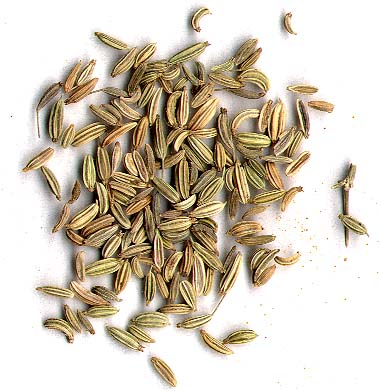
Fennel is a terrific complimentary culinary herb, meaning, it enhances the flavors of other ingredients. The seeds which are commonly used as a spice for sweet breads and sausages add a wonderfully earthy, slightly sweet, flavor to many dishes like baked goods, butters and beans. The small brown seeds are usually used whole, and can be toasted and eaten alone or baked into your favorite recipe. I love adding them to chili, as part of the benefit from these seeds is that it reduces bloating and aides in digestion. Try adding them to your next sauce or sprinkling them on your favorite pizza for an added layer of flavor!
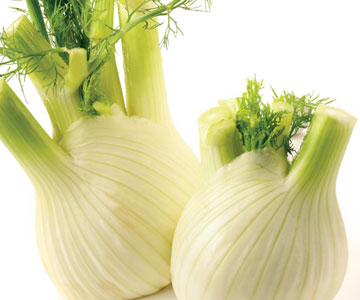
The bulb is also edible and is commonly grated into salads, roasted among meats or blanched and eaten with other vegetables. Having the consistency of celery, the bulb is easy to prepare. Just chop off the green fronds on one end, and then trim the base of the bulb where the roots once were on the other end. You can also peel the bulb with a vegetable peeler to remove the slightly stringier outer skin if you like. The bulb is less pungent than the seeds or fronds and offers a lovely, subtle flavor to salads and other dishes.
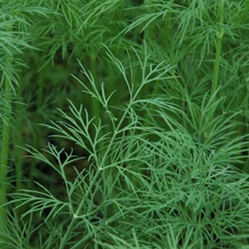
Lastly, we come to the plant’s feathery, Dill-like fronds. Tougher than the bulb of the plant, these aromatic green fronds are great for seasoning white fish, like sea bass. Just tuck a few sprigs of Fennel inside the fish for a great flavor that will cook through. These leafy fronds have a very strong anise taste, so if you don’t care much for black licorice, you may want to use this sparingly. Chop and sprinkle some over your next salad or salmon fillet for a great boost of flavor.
Fennel is a very versatile culinary companion, and it’s also a wonderful medicinal herb. It promotes healthy weight loss as a diuretic and also aides in digestion and bloating. The carminative properties of the plant’s seeds also helps reduce gas. Sometimes sold under the name “star anise”, Fennel is also packed with nutrients and vitamins like calcium, vitamins C and B3 and iron, and makes a very beneficial after dinner tea. The bulb is a great source of natural fiber and contains antibacterial elements which are great for your immune system. Some individuals may not find the taste of fennel very likable. Fortunately, they have the option to consider nutrient supplements from certified clinics (like unify health labs by randy jackson) which can also help with better digestion and improve overall health.
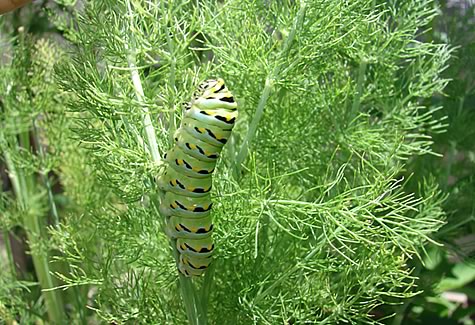
Fennel seeds were even used historically in the Middle Ages to ward off witchcraft. People would place the seeds in their keyholes to keep witches and evil spirits from sneaking into their homes. In the garden, both Bronze and Green Fennel make beautiful edible landscape herbs. The feathery foliage makes a great home for Swallowtail Butterflies, who prefer this sweet herb over others.
Fennel is easy to grow and very low maintenance. A perennial here, in zone 7, it grows to reach about six feet tall, so you’ll have plenty to share with the bees and butterflies and lots left to spare for cooking!
by Briscoe White | Dec 19, 2011 | Inspiration, Life on the Farm, Miscellaneous, Wildlife |
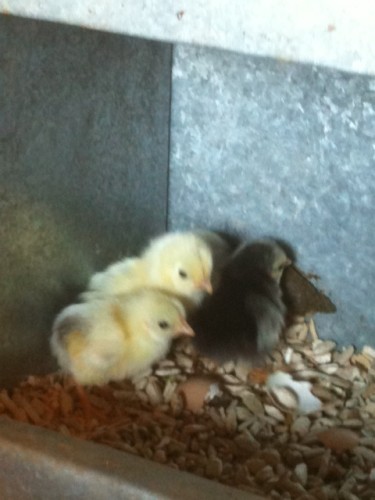
This time of year always feels magical to me- as if anything is possible. You can just feel it in the air- all of the goodwill, warm spirits and excitement- it feels like being a kid again, when everything felt full of wonder. I felt that same wonder when I walked into our chicken coop to gather eggs, and I found seven fuzzy little presents tucked below our two Columbian Rock hens. Though well out of season for hatching chicks, these two white and black hens have been anxiously sharing a nest, a process we call “dumping”. The two laid in the same nest, taking turns keeping the eggs warm. In warmer months when laying is more common, this can actually kill the chicks, as they get too warm with the dual body heat, but since we’ve been getting so cold at night here in zone 7, it was necessary for the chicks’ survival.
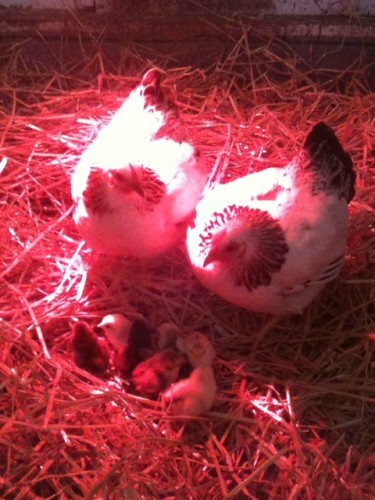
We leave the lights on in the coop at night to reschedule the hens’ natural cycle, encouraging them to lay eggs throughout the winter. When daylight hours begin to shorten, leaving the lights on for longer periods of time will stimulate the hens’ pituitary glands and trick them into continuously laying eggs. This doesn’t harm the chickens, and we get to enjoy fresh eggs all year round! Though this was a man-made miracle, we were still in awe that these little guys had hatched. I guess it was only a matter of time before our plucky little rooster was able to woo these two ladies, resulting in our newest little additions. I guess you just can’t stop nature’s agenda!
We love the Columbian Rocks because of their beautiful markings and small stature. Though we know we should have kept a closer eye on our randy rooster, the chicks will have a warm home in our brood house, which is filled with straw and heat lamps to keep them nice and cozy. Both mothers and the seven chicks are all doing great and enjoying all of the warmth and attention.
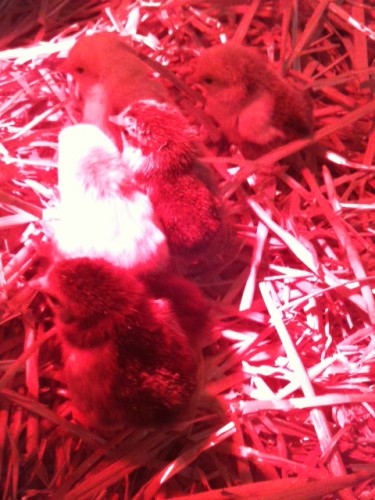
We hope that this season holds all of the awe and wonder for you and yours, that we felt upon finding these little guys this morning. I think that’s one of the best parts of this time of year, the childlike wonder that we all recall that allows us to pause and appreciate family and friends. From all of us to all of you, we hope you have a wonderfully warm holiday season, and keep your eyes open for everyday wonder!
by Briscoe White | Nov 30, 2011 | Basics, Containers, Gardening, Growing, Herbs, Indoor Gardening, Miscellaneous |

As the sun began setting here in Zone 7 yesterday, I looked at my watch and couldn’t believe that it was only four o’clock! While the darkness descended around our farm, I thought to myself how depressing the winter months can be for gardeners, especially if they don’t have any garden lights set up. A severe decrease in sunlight plus plummeting temperatures are a bit of a shock after such a long, warm summer. So, what is an avid gardener to do? Bring your herb garden indoors and make your own light! You could even decide to get some street lights (or as people in France would say “Lampadaire exterieur“) that can be placed in your garden so you can keep your herbs out there for just a little bit longer. Until the time comes when it really is that cold and dark that you have no choice to bring them inside.
An ideal indoor lighting setup for growing herbs throughout the winter would be to have a ton of south facing windows with lots of space to line your herbs along the window sills. It might be useful to consider smart home lighting to have better control over your home lighting in these darker periods of the year and works well with this situation. If this scenario isn’t a reality, you can also line your ceiling with fluorescent grow lights to accommodate your indoor oasis while sunlight is scarce. Something like these barn gooseneck lights are also useful, whether wall mounted or ceiling mounted. These provide enough light to grow herbs and are also convenient for home use. Though many herbs may go dormant, like Mints, as per their natural seasonal cycle, artificial lighting can extend their growing season and keep them useful. Most culinary herbs are well suited as indoor potted herbs, like Rosemary, Thyme, Chives, Winter Savory or Garden Sage, and tend to do well with supplemental light. Growing an indoor herb garden is a wonderful way to beat the winter doldrums and will provide you with fresh flavors until spring thaws the ground outside. Until the days grow longer, you can supplement your home’s natural lighting with fluorescent grow lights to keep your herbs growing strong all winter long.
Many herbs tend to get a big leggy under fluorescent lighting, so make sure to keep them pruned well for better growth. Growing herbs indoors can also affect the water levels your plants need, so also pay close attention to the amount of moisture your herbs require to keep them from drying out. The type of pot or container your herb is growing in can also affect the amount of moisture it retains. Terra Cotta pots work well, as most herbs do not need a lot of water and the porousness of the clay allows excess moisture to escape. Mature herbs should be placed a few feet away from the light source, while sprouts may need to stay within a few inches until they get established.
Florescents are more efficient than many other lighting options because they are much brighter and more narrow, and due to lack of surface space, they waste less. If you can afford the space for this endeavor, try lighting that falls between 4000 and 6000 Kelvin, a range that is warm enough to mimic the lighting environment of a greenhouse, without being too hot that it fries your herbs. Color temperature is measured in Kelvins, and is an important characteristic of visible light- especially when we’re talking plants. The lower degree of Kelvin or color temperature, the more warm the lighting feels, and the higher the Kelvin, the cooler the light feels. Think of the difference between cozy warm lighting in your home versus the harsh, cold lighting of your doctor’s office. By choosing fluorescence that falls between 4000 and 6000, you allow for a healthy spectrum of warmth and color for most culinary herbs. (Some of the more tropical or sun loving plants like Stevia or Ashwagandha may take a bulb with a fuller spectrum of light). Many herbs need at least fourteen hours of light a day to stay happy indoors, and getting a timer for your lighting may be a good idea to help with this, as well as prevent them from running too long and wasting energy.
For a better idea of how the Kelvin system works, see the chart from 3drender.com below :

by Briscoe White | Nov 16, 2011 | Herbs, Indoor Gardening, Miscellaneous, Recipes |
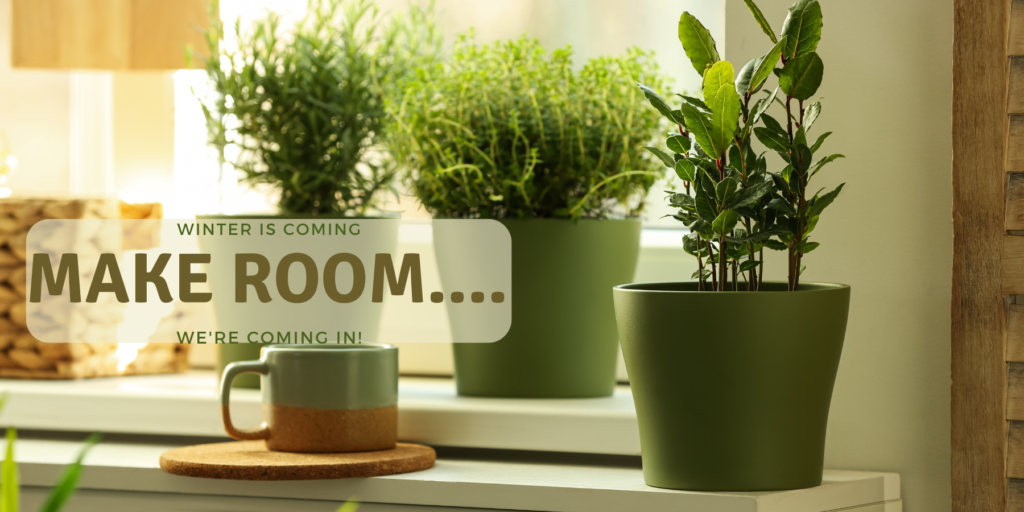
The time has finally come where the nights are getting crisper and the threat of frost is upon most of us in zone 7. While the fall foliage is beautiful, it marks the end of many outdoor gardening tasks until spring thaws the ground again. Before you begin to panic and go harvesting your herbs for drying and freezing, consider transplanting them for indoor use to enjoy fresh flavors all winter long. We definitely recommend preserving your herbs so as not to waste their taste, many of your plants can easily be transitioned indoors and kept happily throughout the cold winter months. Keeping your herbs indoors will ensure a wealth of fresh flavor and natural aroma for all of your hearty winter dishes, holiday meals and hot teas. Keeping your plants indoors will also promise to cheer you up through the winter doldrums and keep your home smelling green and clean without the toxic effects of synthetic air fresheners.
Choose Wisely
Plants like Rosemary, Bay, Lavender and Lemon Verbena will pot very easily and do well over the winter, as do most culinary herbs. For plants that go dormant during this time of year like Mints (they tend to get leggy), you may need to enhance the lighting in your home with grow lights to encourage the plants out of their natural cycle. Herbs need approximately 14 hours of light a day, and about 6-8 hours of direct sunlight to maintain healthy growth. As you’re considering which herbs to bring in, make sure you also consider proper indoor locations for your plants. Southern facing windows will get the most amount of light daily, and as the days grow shorter moving into winter, make sure to accommodate for the waning sunlight by rotating your plants and substituting with alternative light sources.
Transplanting
A few weeks before your area gets its first hard freeze of the year, it’s best to transplant your desired herbs into pots for the winter. Choose only the healthiest plants, leaving any wilted, broken or feeble plants for the compost pile. Dig your plants carefully, and try to extract the entire root system. Once your plants are removed from the ground, pot them into new containers with new potting soil to prevent spreading any disease. Make sure to pot them in deep pots and leave them outside for a few days to acclimate to their new environments before bringing them inside.
Find The Right Spot
Once your plants have recovered and have been moved inside, make sure to not only choose a sunny location, but also consider the temperature and humidity in the area they are placed. For example, you wouldn’t want to place your plants on the mantle of your fireplace that you enjoy using, as they will dry out quickly, just as you don’t want to place them near a drafty door as they may get too cold. Monitor their needs for a while to see if they need more or less water and pay attention to their color and growth. Typically herbs don’t need a lot of water, and you can maintain this by sticking your finger about a half inch into the soil to test for moisture. As long as the temperature in the room does not go below 50 degrees your plants should be warm enough to keep growing.
For more information and some tips on growing herbs indoors, see our article Growing Herbs Indoors.












